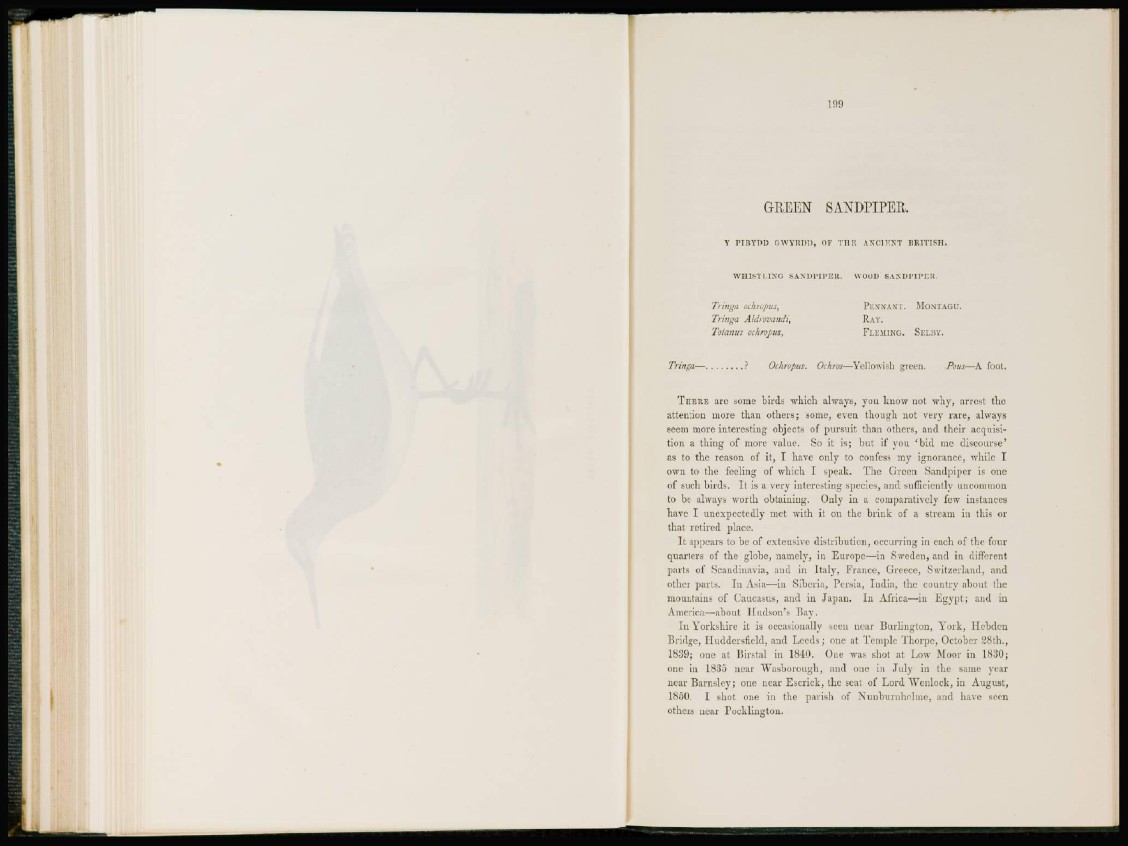
GREEN SANDPIPER.
T PIBYDD fiWVRim, OF THE ANCIENT BRITISH.
WHISTLING SANDPIPER. WOOD SANDPIPER.
Tringa ochropus, PENNANT. MONTAGU.
Tringa Aldrovandi, RAY.
To/anus ochropus, FLEMING. SELBY.
Tringa— ? Ochropus. Ochros—Yellowish green. Pous—A foot.
THERE arc some birds which always, you know not why, arrest tbe
attention more than others; some, even though not very rare, always
seem more interesting objects of pursuit than others, and their acquisition
a thing of more value. So it is; but if you ' b i d me discourse'
as to the reason of it, I have only to confess my ignorance, while I
own to the feeling of which T speak. Tire Green Sandpiper is one
of such birds. It is a very interesting species, and sufficiently uncommon
to be always worth obtaining. Only in a comparatively few instances
have I unexpectedly met with it on the brink of a stream in this or
that retired place.
I t appears to be of extensive distribution, occurring in each of the four
quarters of the globe, namely, in Europe—in Sweden, and in different
parts of Scandinavia, and in Italy, France, Greece, Switzerland, and
other parts. In Asia—in Siberia, Persia, India, the country about the
mountains of Caucasus, and in Japan. In Africa—in Egypt; and in
America—about Hudson's Bay.
I n Yorkshire it is occasionally seen near Burlington, York, Ilcbden
Bridge, Huddersfield, and L e e d s ; one at Temple Thorpe, October 28th.,
1839; one at Birstal in 1840. One was shot at Low Moor in 1830;
one in 1835 near Wasborongh, and one in July in the same year
near Barnsley; one near Escrick, the seat of Lord Wenlock, in August,
1850. I shot one in the parish of Nuuburnholme, and have seen
others near Focklington.